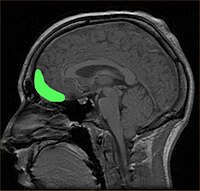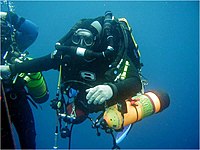
Association between the level of attention and dual‐task costs on postural sway and cognitive yield in children, adolescents, and young adults
Sign Up to like & getrecommendations! Published in 2021 at "International Journal of Developmental Neuroscience"
DOI: 10.1002/jdn.10092
Abstract: Postural stability requires attentional resources. Dual‐task paradigms are used to investigate the attentional demand of the studied tasks. However, no studies have been conducted on the subjects' level of attention, analyzing its association with dual‐task… read more here.
Keywords: dual task; association level; task; level attention ... See more keywords

Dual Task Turning in Place: A Reliable, Valid, and Responsive Outcome Measure of Freezing of Gait
Sign Up to like & getrecommendations! Published in 2021 at "Movement Disorders"
DOI: 10.1002/mds.28887
Abstract: Freezing of gait (FOG) is a complex symptom in Parkinson's disease (PD) that is both elusive to elicit and varied in its presentation. These complexities present a challenge to measuring FOG in a sensitive and… read more here.
Keywords: dual task; turning place; place reliable; freezing gait ... See more keywords

Motor-cognitive dual-tasking under hypoxia
Sign Up to like & getrecommendations! Published in 2017 at "Experimental Brain Research"
DOI: 10.1007/s00221-017-5036-y
Abstract: Hypoxic conditions diminish motor performance and cognitive functions, especially when the motor task and the cognitive task are conducted simultaneously. Hypoxia does further increase prefrontal cortex activity which provokes a reduced capability of efficient resource… read more here.
Keywords: dual task; task; hypoxic conditions; motor ... See more keywords

Modulation of dual-task control with right prefrontal transcranial direct current stimulation (tDCS)
Sign Up to like & getrecommendations! Published in 2017 at "Experimental Brain Research"
DOI: 10.1007/s00221-017-5121-2
Abstract: Executive functioning of two simultaneous component tasks in dual-task situations is primarily associated with activation of the lateral prefrontal cortex (PFC), as demonstrated in functional imaging studies. However, the precise role of the lateral PFC… read more here.
Keywords: dual task; task; direct current; stimulation ... See more keywords

Influence of dual-task constraints on the interaction between posture and movement during a lower limb pointing task
Sign Up to like & getrecommendations! Published in 2018 at "Experimental Brain Research"
DOI: 10.1007/s00221-018-5189-3
Abstract: One of the challenges regarding human motor control is making the movement fluid and at a limited cognitive cost. The coordination between posture and movement is a necessary requirement to perform daily life tasks. The… read more here.
Keywords: dual task; task; movement; posture movement ... See more keywords

How visual information influences dual-task driving and tracking
Sign Up to like & getrecommendations! Published in 2020 at "Experimental Brain Research"
DOI: 10.1007/s00221-020-05744-8
Abstract: The study examined the impact of visual predictability on dual-task performance in driving and tracking tasks. Participants ( N = 27) performed a simulated driving task and a pursuit tracking task. In either task, visual predictability… read more here.
Keywords: dual task; predictability; task; visual information ... See more keywords

Persons in remission from recurrent low back pain alter trunk coupling under dual-task interference during a dynamic balance task
Sign Up to like & getrecommendations! Published in 2020 at "Experimental Brain Research"
DOI: 10.1007/s00221-020-05772-4
Abstract: This study investigated effects of cognitive dual-task interference and task prioritization instructions on task performance and trunk control during a dynamic balance task in persons with and without recurrent low back pain (rLBP). First, we… read more here.
Keywords: dual task; task; trunk coupling; balance ... See more keywords

Electroencephalographic neurofeedback training can decrease conscious motor control and increase single and dual-task psychomotor performance
Sign Up to like & getrecommendations! Published in 2020 at "Experimental Brain Research"
DOI: 10.1007/s00221-020-05935-3
Abstract: The control of human movements is thought to automize with repetition, promoting consistent execution and reduced dual-task costs. However, contingencies such as illness or constraints to regular movement patterns can promote conscious motor control, which… read more here.
Keywords: dual task; task; control; motor ... See more keywords

Does spinal excitability scale to the difficulty of the dual-task?
Sign Up to like & getrecommendations! Published in 2017 at "European Journal of Applied Physiology"
DOI: 10.1007/s00421-017-3652-7
Abstract: PurposeThis study examined whether spinal excitability, as measured by the soleus Hoffmann reflex (H-reflex), is scaled to the difficulty level of the dual-task being performed.MethodsTwenty-two participants completed a combination of three balance task and three… read more here.
Keywords: dual task; difficulty; spinal excitability; task ... See more keywords

A cross-sectional analysis on the effects of age on dual tasking in typically developing children
Sign Up to like & getrecommendations! Published in 2019 at "Psychological Research"
DOI: 10.1007/s00426-018-1126-0
Abstract: Dual tasking is an integral part of everyday activities for children. Therefore, as with the other aspects of child development—motor, cognitive, perceptual, psychological, and behavioral—it is important to understand the maturation process of dual-tasking skills… read more here.
Keywords: dual task; task; age; differences dual ... See more keywords

Does the transcranial direct current stimulation improve dual-task postural control in young healthy adults?
Sign Up to like & getrecommendations! Published in 2021 at "Cognitive processing"
DOI: 10.1007/s10339-020-01000-7
Abstract: Some studies have suggested that postural balance improved after a single session of transcranial direct current stimulation (tDCS), whereas others have found minimal, if any, effects on postural performance. To address the issue of replication… read more here.
Keywords: dual task; tdcs; direct current; current stimulation ... See more keywords